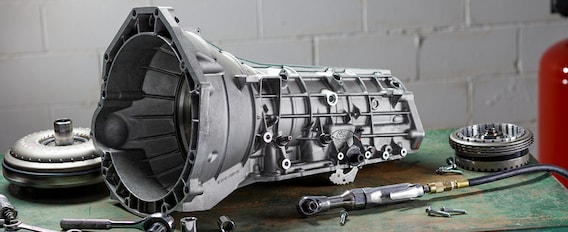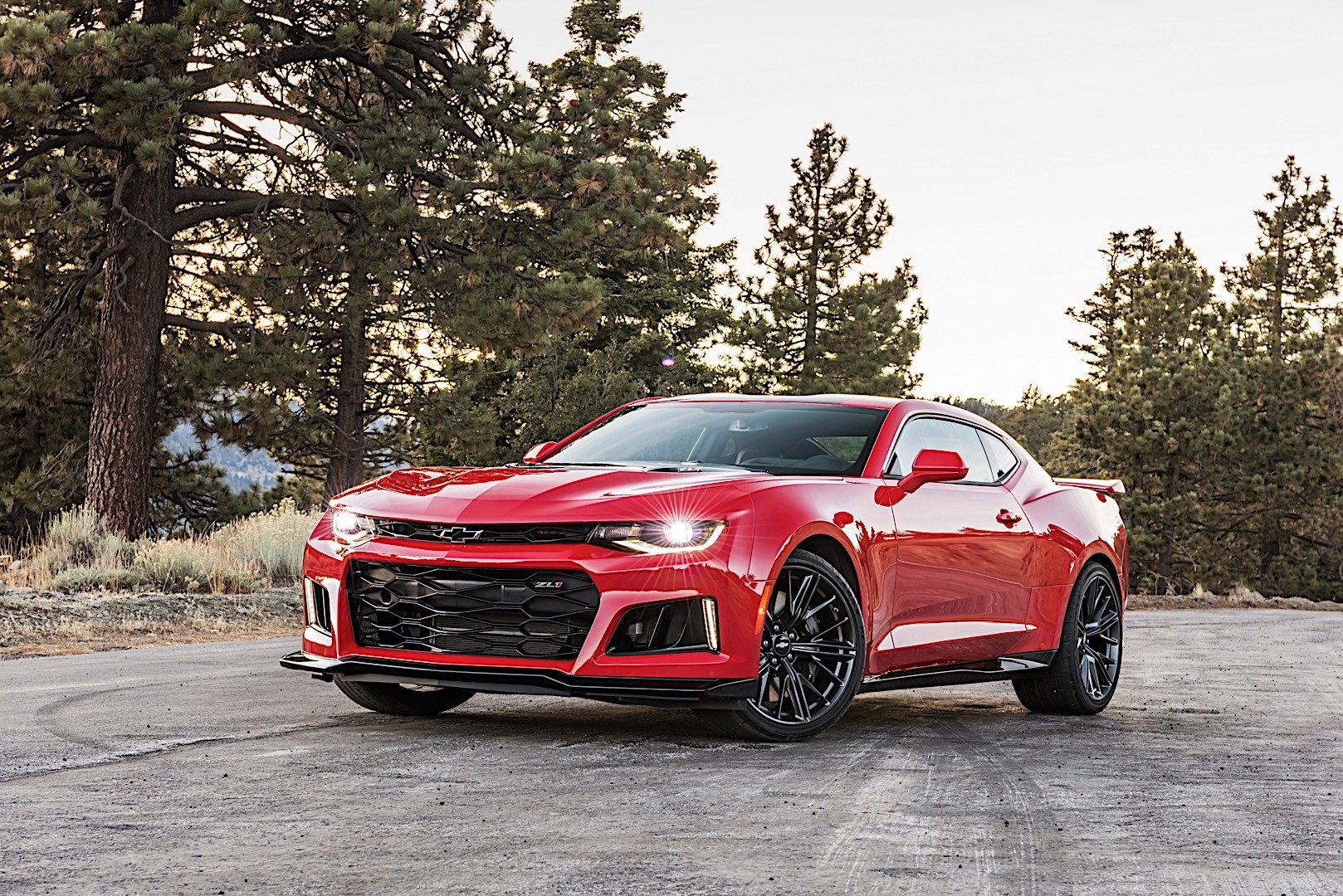Even though close to 80% of heavy truck transmissions sold by Eaton are manual, there is still a demand for automatic transmissions. Eaton manufactures majority of the Class 8 manual transmissions for the United States and Canada with the exception of Mack whom use their own transmissions.
There are three types of transmissions found in semi-truck tractors, which are automated manual transmission, automatic transmission, and manual transmission. This article will mainly explore automated manual transmissions which are also referred to as automated mechanical transmissions. Allison TC10 automatic transmission is the only automatic transmission available for trucks today. TC10 transmissions are not yet adept to highway/over-the-road trucks therefore will not be covered in this article as we aim to determine the best semi-truck automatic transmission.
The SuperMatic™ 10L90-E 10-speed automatic transmission offers a technologically advanced balance of performance and efficiency when matched with Chevrolet Performance’s Gen V Crate Engines, including the LT1, LT4, and LT5. The Fuller Advantage series 10-speed automated manual transmission is available in direct drive and overdrive ratios giving you the choice to spec the correct ratio for your fleet. The efficient design uses a Precision Lubrication System that requires much less lubricant than competitive AMTs and eliminates the need for a transmission cooler. The all-new Allison 10-speed 10L1000 automatic transmission (RPO MGM, MGU) available on 2020 Silverado HD and Sierra HD models equipped with the 6.6L Duramax diesel engine combines enhanced performance, fuel economy, and operational flexibility with an industry-leading reputation for reliability.
- Ford introduced a 10-speed transmission called the 10R80 automatic transmission that you can find on their models such as the 2017 to 2020 F-150s that has proven to be one of the most problematic transmissions on the market today. Ford 10 speed transmission problems have largely been a result of this decision. Auto Repairs Are EXPENSIVE.
- Having recently driven the Lexus LC 500, he questions if a 10-Speed automatic transmission is necessary or overkill. Doing what he does best, he goes straight to the whiteboard to carefully explain why a 10-speed transmission is perfect for the LC 500. Jason breaks this all down with 3 reasons why going with 10 gears makes the most sense.
What is an automatic manual transmission?
An automatic manual transmission (AMT) is a combination of the traditional manual and automatic transmissions. An AMT is when a mechanical transmission is automated through the addition of actuators, computers, and sensors to the shift clutch and fork. People in the industry will commonly refer to AMT’s as an automatic transmission but it is important to make the distinction especially as torque converter hydraulic automatic transmissions are beginning to enter the market. The electronic parts which give AMT’s its name include the driver interface, gear shift actuator, sensors, clutch actuator, driver display (speeds) base gearbox, electronic control unit, and a clutch or torque converter.
The main supplies of automated manual transmissions are Daimler’s Detroit Diesel, Eaton, and Volvo. The AMT works by using a computer control system to automatically shift the gearbox of a manual transmission. This process is supported with actuators for the clutch and shift forks. There are different power modes for different types of driving conditions including maximum grade-ability and low speed maneuverability. AMTs have two pedals and a shift pad in place of the gearshift lever.
If you want to get an idea of which truck manufacturer uses which transmission supplier with which engine supplier, then refer to the table below:
| Truck Brand | ||
| Freightliner/Western Star | Detroit Diesel | Detroit DT12 |
| Freightliner/Western Star | Cummins | Eaton |
| Volvo | Volvo | Volvo |
| Volvo | Cummins | Eaton |
| Mack | Mack | Mack |
| International | Cummins/MaxxForce | Eaton/Allison |
| Peterbilt/Kenworth | PACCAR/Cummins | Eaton |
Benefits and Downsides
There are benefits and challenges associated with AMT’s as there are with all types of truck transmissions.
Benefit #1: Better fuel efficiency
Manual transmissions are prone to human error because shifting the gear at the right time is important if the truck is to maintain the correct torque and speed for the corresponding driving situation. By preventing inefficient shifting by a trucker, the computer is able to override the manual shifting to produce more accurate gear positions. That is not to say that AMTs do not require skill to operate. In fact, the level of fuel economy benefits a truck operation gets out of an AMT will depend upon the capability of the driver and how well they are trained to handle electronic transmissions. However, it can be firmly said that the skill level and attention to detail required to operate an AMT is less than a manual transmission. The average improvement in fuel economy for fleets is estimated at 2%.
Another way fuel economy is improved with AMTs is through the coupling of electronic transmissions with other powertrain parts such as engines that use an electronic diesel fuel injection control system. Lower RPM with high torque allows the engine to consume less fuel. Down-speeding or low speed gearing with AMT’s has been analyzed by Cummins to cause a reduction in fuel economy from 7.10 MPG (AMT) to 6.92 MPG (manual) during a 330-mile highway haul which utilized the same route.

Benefit #2: Better Driver Recruitment, Training, and Safety
The people who make up the trucking industry benefit from the use of AMTs. In 2015, the American Transportation Research Institute ranked driver shortage as the 3rd biggest issue concerning the trucking industry. Perhaps, the career description is not as appealing to younger people and women so the familiarity of automatic transmissions can improve driver recruitment with these demographics. Existing drivers have also reported that less effort is required with AMTs compared to manual transmissions.
There are also some downsides to using an AMT in your truck(s).
Downside #1: Higher upfront cost and lower resale value
On average, an automated manual transmission costs $3,000 – $5,000 more than a manual transmission and when it’s time to sell they will net you a $1,000 to $1,500 loss.
Downside #2: Maintenance costs are higher
Electronically controlled transmissions are made up of more parts so when it comes to repairs, the cost is expected to be higher than its counterpart. However, AMTs do not place as great of a load on the clutches which means the clutch will have a longer life and reliability level.
It should be kept in mind that automated manual transmissions have only recently begun picking up steam in terms of their use which means most AMTs are still in their initial warranty coverage period. As a result, there is a lack of concrete data to accurately determine maintenance cost averages.
Downside #3: The need to Spec a truck in a more integrated way
Electronic transmissions will probably require you to assess the overall parts of your semi-truck tractor to ensure they are compatible for the best performance. Therefore, evaluate the powertrain as a whole and see how a AMT will fit in with the other parts such as the engine and axles.
Detroit Transmission
Daimler, the parent company of Detroit introduced its first automated manual transmission to be sold in North America. Detroit launched the production of its DT12 AMT in 2013.
The DT12 does come in a smaller variation but the one for the standard sleeper highway semi-truck, is approved for 120,000 GCWR (Gross Combined Weight Rating).
The ECOAST mode automatically disengages the transmission when traveling downhill. As a result, engine RPMs will drop, momentum will be maintained, and fuel economy will go up. It also has skip shift mode which essentially skips unnecessary gears which help improve acceleration to get to the cruise speed more efficiently. The Common Powertrain Controller improves communication and operation efficiency throughout the power-train. It is one of the lightest class 8 truck transmissions which is mainly due to its
It is one of the lightest class 8 truck transmissions which is mainly due to its aluminum housing and single countershaft. Detroit has also recently added a power take-off feature to their engines which is especially useful for owner-operators that haul different types of goods.
Eaton Transmission
Eaton has the largest market share in the heavy-duty truck transmission sector. It plays a similar role like Cummins does with its engines, being thatalmost every truck brand utilizes their product in their vehicles. However, Eaton transmissions are not featured in Mack trucks.
Eaton transmissions have been reported to perform well with Cummins’ engines.
Even though Eaton has made adjustments to its previous AMTs such as adding more aluminum, eliminating the external oil cooler, and reducing the number of hoses by 12 feet, the it is still a significant amount heavier than Volvo or Daimler transmissions.
Eaton’s Ultrashift PLUS series is available in 6 different models suitable for linehaul and vocational purposes. The Linehaul series for the UltraShift PLUS is built from the foundation of the Fuller 10-speed manual and utilizes an electronic clutch actuator to shift in a two-pedal method. It has no clutch pedals. The hill start aid will prevent your truck from rolling back. Skip shifting is featured to avoid unnecessary gears. Other features in the Eaton UltraShift Plus LSE are:
- Multiple operating modes including low, manual, and automatic
- Performs up with the highest torque capacity engines
- Engine overspeed protection
- Creep mode helps operator to curb, spread, and pave.
Volvo Transmission
Volvo manufactures its own transmissions for its own trucks under the I-Shift product line. Volvo does offer Eaton’s UltraShift PLUS. It may be of interest to you to know that Volvo is the parent company of Mack meaning they own the company. The I-Shift transmission is the same AMT used in
10 Speed Automatic Cars
Mack Trucks but it is marketed under the name Mack mDRIVE which are paired with MP8 heavy-duty truck engines.
There are 4 types of I-Shift transmissions that vary based on software and mode. They are fuel economy basic, performance premium, comprehensive premium, and gentle-shift. The rock out and power launch features help truckers get their truck moving if it gets stuck in snow or mud.
Refer to this informative brochure for additional help regarding Volvo’s transmissions.
Factors to consider when evaluating the best semi-truck automatic transmission
Now we will discuss some key factors to consider when deciding which is the best semi-truck automatic transmission to buy.
- It should take little time to shift between gears
- Cost should be reasonable
- Power-take off operation should be included
- Good noise and handling
- No external cooler should be required
- Serviceable with reasonable maintenance costs
- Should not require special fluids
- Engine speed should be maintained at high levels when decelerating to maximize engine retardation.
Gear ratios will be covered in a future guide. For now, you should have enough basic information to be informed of the different automated manual transmission options and to have an idea of what specifications are relevant to you. Consult the respective AMT manufacturer’s websites for more information about their products.
[contextly_sidebar id=”S863cErw0c2jajXvspcI7pt7Gl5IXilc”]

Related Posts:
GM and Ford’s new 10-speed, automatic transmissionsent waves of excitement throughout the automotive community. There is a fiercerivalry between two of the largest vehicle manufacturers in the world, yet theyput their countless differences aside to work on a 9-speed transverse/transaxleand 10-speed transmission. The jointventure reflects both sides recognizing the importance of producing a high-qualitytransmission via collaboration rather than competition. General Motors and Forddesigned the transmission, originally placing it inside the 2017 ChevroletCamaro XL1, for a single purpose: to push performance and efficiency to arevolutionary level.
Dan Nicholson, GM Global Propulsion System’s vicepresident, stated: “With world-class shift times on par with the world’s bestdual-clutch transmission and the refinement that comes only from the trueautomatic, the 10-speed delivers incomparable performance on and off the track…it also leverages the experience of our other multispeed transmissions todeliver that performance with greater efficiency as its use expands into othervehicles.”
The revolutionary 10-speed transmission soundsimpressive in theory – but what exactly makes it stand out. In the contentbelow, we explore what you need to know about the new 10-speed transmission. Many of these characteristics will hold truefor the 9-speed transaxle.
1. Ratio Distance
The span between the 1st and 10thgear is wide; however, GM and Ford’s 10-speed transmission is relatively tight.Limited span between higher gears increases sustainability during highwaydriving, especially when in the final gear. The 10-speed transmission offers a20% decrease in RPM during shifting. While towing, decreased ratio distanceensures smoother shifts.
10 Speed Automatic Honda Accord

2. Close 8th, 9th, and 10th Gears
What is the purpose of 10 gears? The final threeperform as overdrive tools. The 8th, 9th, and 10thgears enhance acceleration, fuel economy, and – as mentioned – towingperformance. Due to the proximity of ratios, downshifting between top gears isnearly imperceptible.
3. Smooth Shifting

GM and Ford’s 10-speed transmission is guided by sixclutches, installed in pairings. When shifting gears, the torque converter isnot forced to unlock. Each clutch is regulated by solenoid valves. This evolutionis consistent with the trend of increased electrificationof the transmission. Finally,hydraulic passage lengths are shortened. These unique factors increaseefficiency, resulting in a smooth, seamless shift or downshift without jarringor shaking.
4. Reducing Mechanical Friction Spin Loss
Ultimately, the 10-speed transmission is designed toreplace 6-speed and 8-speed transmissions. GM and Ford built the transmissionto minimize spin losses. Reducing spin loss guarantees that the 10-speedtransmission’s gears work more efficiently than its 6-speed and 8-speed counterpart.
5. Fuel Efficiency & Optimized Procedures
Trends in the automotive world continually pointtowards fuelefficiency, especially in the design of transmissions.Fuel-efficient technologies are developed and augmented regularly. Compared toa 6-speed transmission, the 10-speed adds only one-inch and four pounds to thetransmission body. Without a single cast-iron component, the transmission islight while remaining powerful and efficient.
Alongside a focus on fuel efficiency, GM and Ford builttheir 10-speed transmission for optimal functioning, operated by two hydraulicpumps. Both pumps perform a different task, each balancing temperature andtransmission fluid pressure. Optimal functioning depends on Mercon ULV orDexron ULV, transmission fluid created specifically for Ford and GM’sinnovative transmission, to reduce friction, regulate temperature, and preventhydraulic pump surplus. Increased fluidcomplexity is a trend impacting transmission fluidand will continue into the future. The “ULV” stands for ultra-low viscosity andis increasingly important for clutch engagement and ease of travel throughelectronic components such as solenoids.
Among others in the GM line, the Camaro ZL1, ChevyTahoe, Cadillac Escalade, and Yukon Denali are built with the 10-speedtransmission. On the Ford side, the 10-speed can be found in the F-150,Mustang, Expedition, Navigator and Ranger. Further integrations willincreasingly become evident as 2019 closes and 2020 looms on the horizon.
Manufacturers across the globe are scrambling to achieve increased fuel economy and performance from vehicles. The transmission is at the center of that engineering effort. Many experts caution the pace of change because the durability of new designs is unknown. Normally it takes many years to test and realize design flaws. Even then, major transmission issues may not become apparent to customers until a vehicle achieves 100,000 miles. At this point a customer could be faced with a major transmission repair bill. This is where our shops can assist retail, wholesale and fleet customers across Colorado.
In Need of Expert Transmission Repair?
Get in touch with our team to schedule an appointment!
Advanced Transmission Center
10 Speed Automatic Gm
At AdvancedTransmission Center, we are transmission experts – skillfullyaddressing every issue with honesty, integrity, and a wealth of experience. Fourdecades to be specific! We take every project seriously, treating everycustomer with respect. Our brand is built on top-quality workmanship andcustomer satisfaction. Learn why we are Coloradans preferred localtransmission shop.
To get in touch, call either of our locations today orcomplete our onlinecontact form! We look forward to working alongsideyou.
10 Speed Automatic Transmissions
Southwest Metro Denver (Lakewood/Littleton): Call (303) 816-3856
Northwest Metro Denver (Westminster): Call (303) 647-5257
